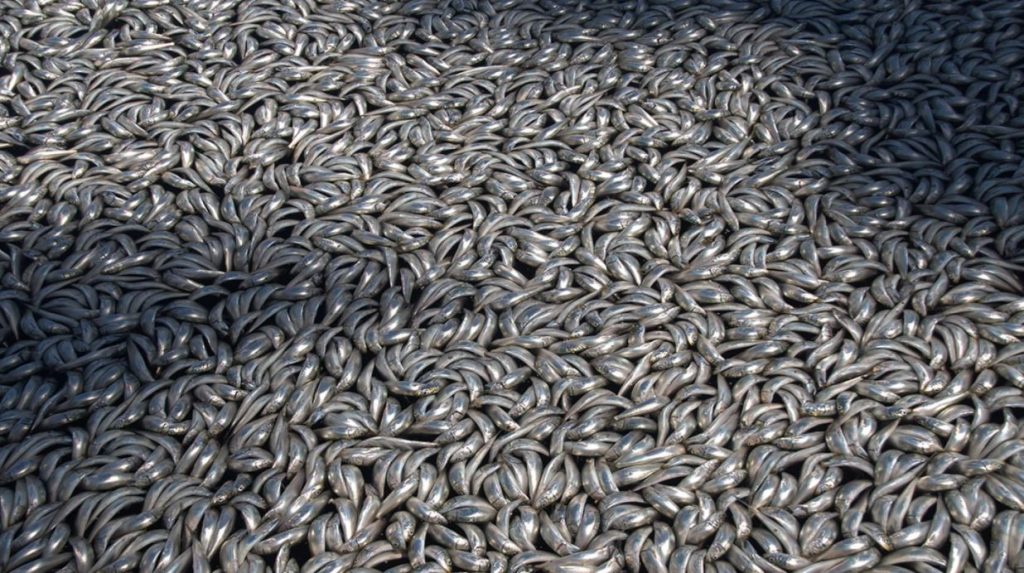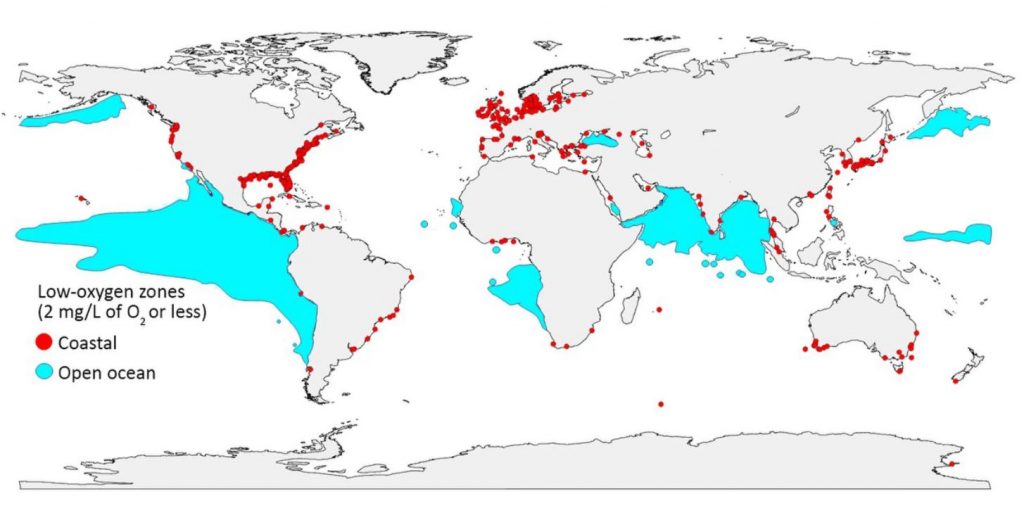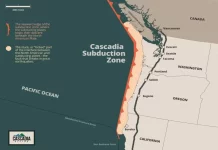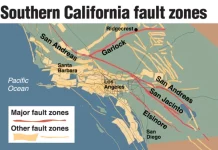Ocean “dead zones” — regions of the sea where oxygen is severely or entirely depleted and most forms of life can’t survive — are booming worldwide, and scientists warn that they will continue to increase. Even outside these near-lifeless ocean regions, influxes of nutrient pollution are throttling oxygen levels in the open ocean and in coastal areas, threatening communities of sea life around the world. And less oxygen in the ocean doesn’t just spell trouble for marine plants and animals — it could carry serious repercussions for life on land as well.

While water molecules contain oxygen atoms, liquid water must also contain dissolved oxygen in order for fish and other organisms to breathe. Oxygen-deprived dead zones were first identified in estuaries — bodies of water where rivers flow into the sea — in the mid-19th century, and their oxygen depletion was linked to the presence of urban sewage in the water.
Since then, growth of industrial and agricultural activity has disrupted the ocean’s chemical balance, with regions in many areas worldwide becoming infused with pollutants and nutrients that starved the water of oxygen. Meanwhile, rising surface water temperatures hamper oxygen’s solubility in water and restrict its distribution into the deeper ocean. At the same time, some forms of marine life have grown increasingly stressed due to more acidic oceans, which increases their oxygen requirements.
New scientific study
The team of scientists from the Global Ocean Oxygen Network found that the toll on Earth’s oceans has been significant.
Over the past 50 years, the ocean suffered a loss of about 85 billion tons (77 billion metric tons) of oxygen, affecting an accumulated area approximately the size of the European Union. Globally, the amount of zero-oxygen ocean water has quadrupled, while the area occupied by low-oxygen zones has increased by 10 times. In coastal areas and seas that are semi-enclosed, once low-oxygen conditions are established, they can persist for thousands of years.
“If we lost 4.5 million square kilometers of productive area on land, everyone would be appalled,” Breitburg said in a statement. “But what happens beneath the surface of the ocean is out of sight, and easy to either not notice or ignore.”

Data provided by R. J. Diaz via LiveScience
As oxygen levels in water drop, the behavior and growth of fish and other ocean organisms is affected — a lack of oxygen can make them more susceptible to disease, or make it more difficult to reproduce. In extreme cases, they can suffocate. While certain types of microorganisms thrive under low oxygen conditions, most larger forms of sea life either die or abandon oxygen-starved waters, invading nearby ecosystems where they may upset the balance of life, disrupt food webs or increase their vulnerability to predators, the study authors explained.
Damage can be reversed
In some cases, evidence shows that the damage can be reversed, and areas where nutrients and sewage had sucked oxygen from the water may yet recover once the flow of contaminants is removed.
For example, parts of the Thames Estuary in London and the Delaware River Estuary — both of which endured long periods with no oxygen and no fish — “are now much improved and host vibrant fish communities,” Breitburg said.
And in Massachusetts’ Chesapeake Bay — long known for dead zones that seasonally cover about 30 percent of its area — nitrogen pollution levels have decreased by 24 percent, a result of improved farming practices and sewage management, and better air quality under regulations such as the Clean Air Act.
However, when it comes to oxygen loss in the open ocean, “we’re in uncharted territory,” Breitburg said. “We don’t know how long it will take for the ocean to respond.”
Follow us: Facebook and Twitter
By Mindy Weisberger, via Live Science













[…] Ocean “dead zones” — regions of the sea where oxygen is severely or entirely depleted and most forms of life can’t survive — are booming worldwide, and scientists warn that they will continue to increase. Even outside these near-lifeless ocean regions, influxes of nutrient pollution are throttling oxygen levels in the open ocean and in coastal areas, threatening communities of sea life around the world. And less oxygen in the ocean doesn’t just spell trouble for marine plants and animals — it could carry serious repercussions for life on land as well. While water molecules contain oxygen atoms, liquid water must also contain dissolved oxygen in order for fish and other organisms to breathe. Oxygen-deprived dead zones were first identified in estuaries — bodies of water where rivers flow into the sea — in the mid-19th century, and their oxygen depletion was linked to the presence of urban sewage in the water…. more […]
[…] While water molecules contain oxygen atoms, liquid water must also contain dissolved oxygen in order for fish and other organisms to breathe. Oxygen-deprived dead zones were first identified in estuaries — bodies of water where rivers flow into the sea — in the mid-19th century, and their oxygen depletion was linked to the presence of urban sewage in the water…. more […]
[…] post Oceans are suffocating appeared first on STRANGE SOUNDS – AMAZING, WEIRD AND ODD […]